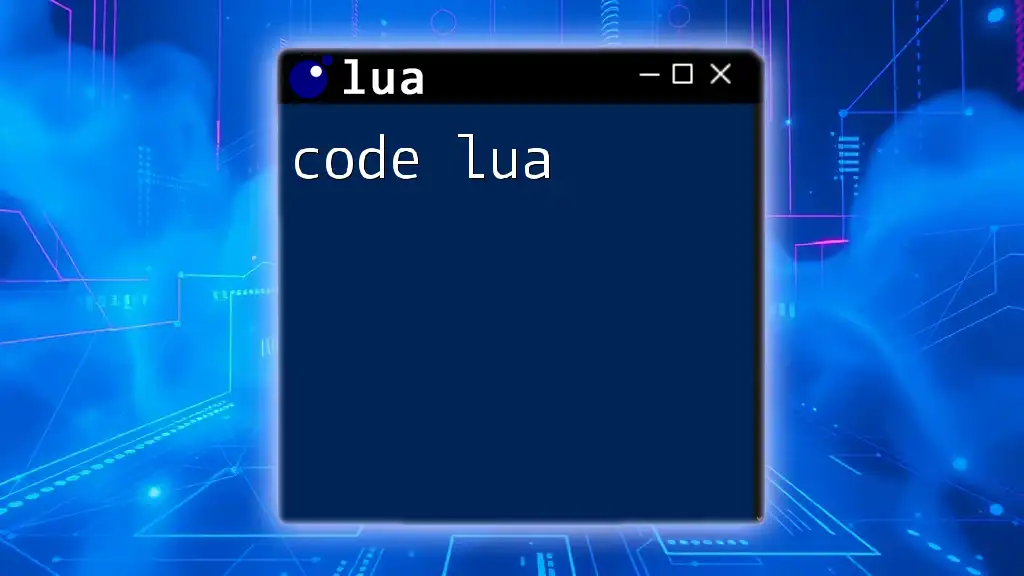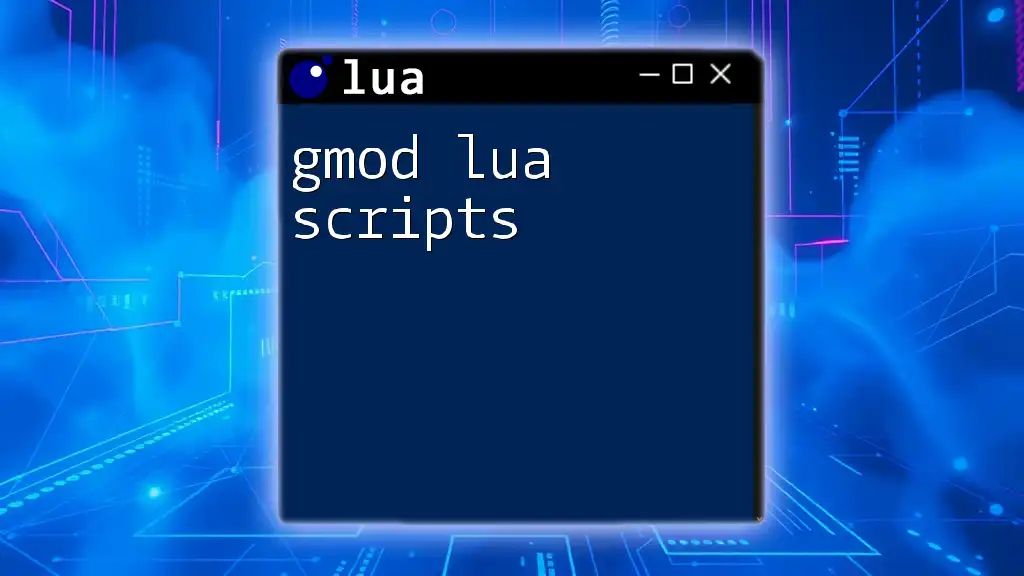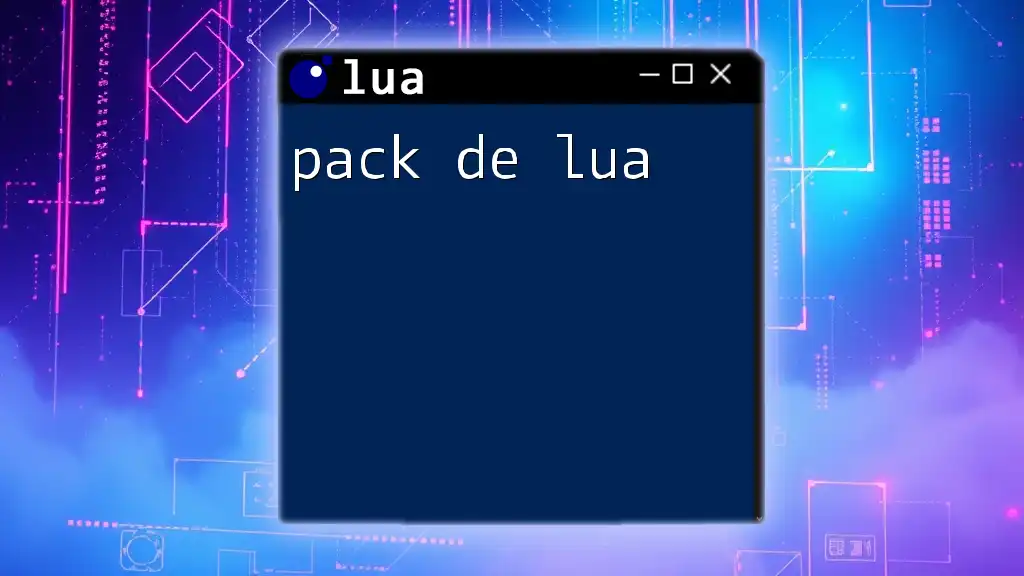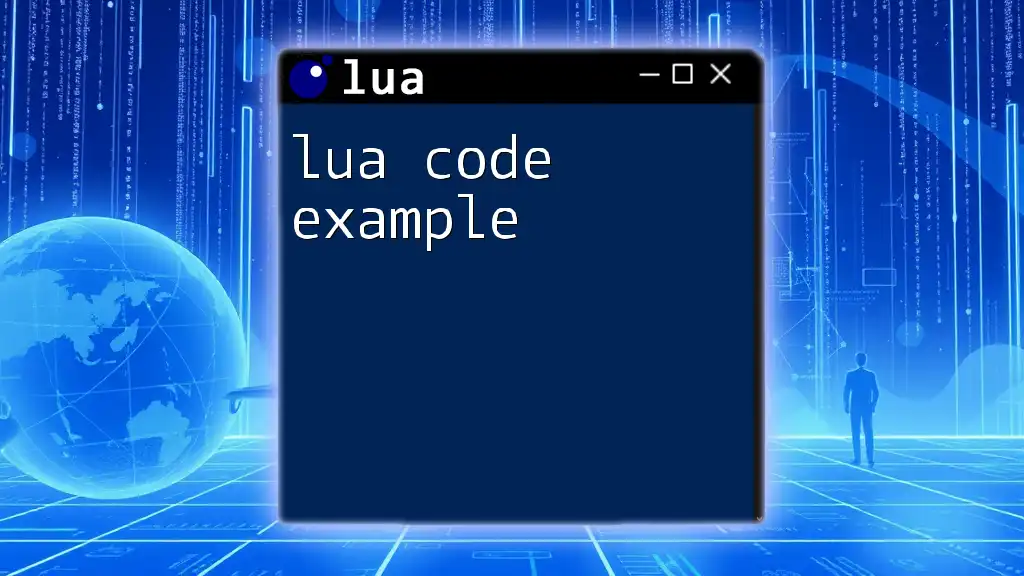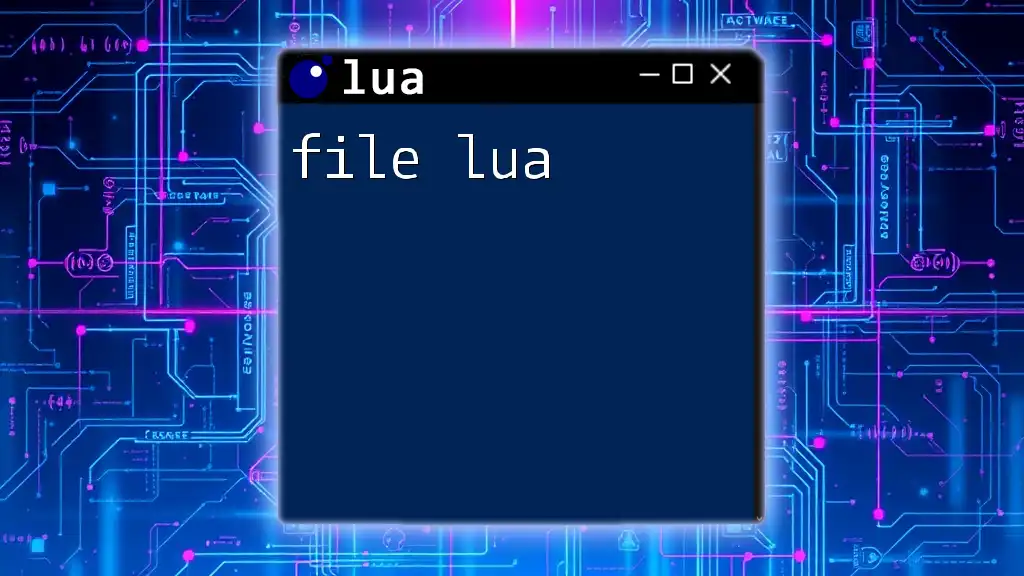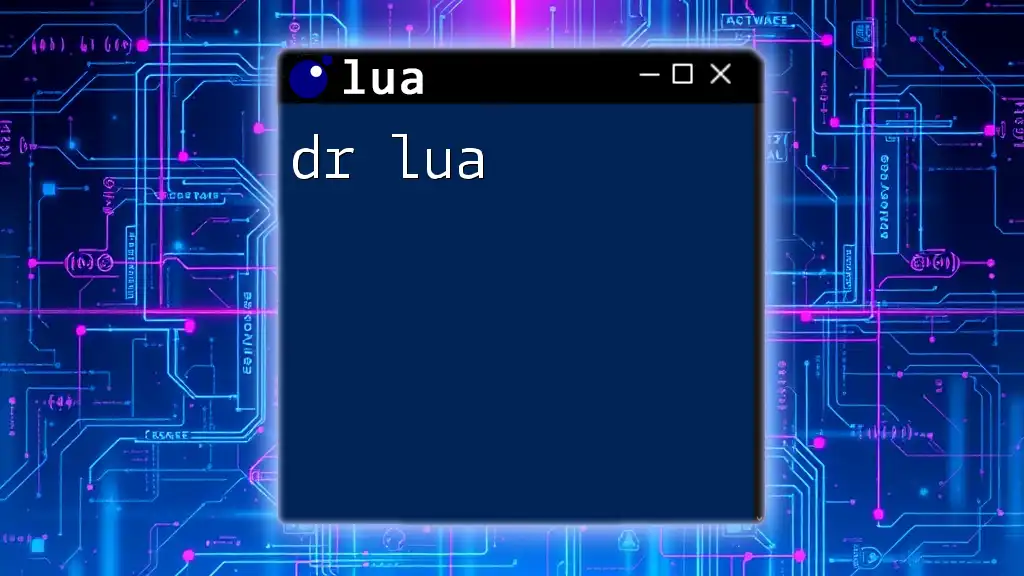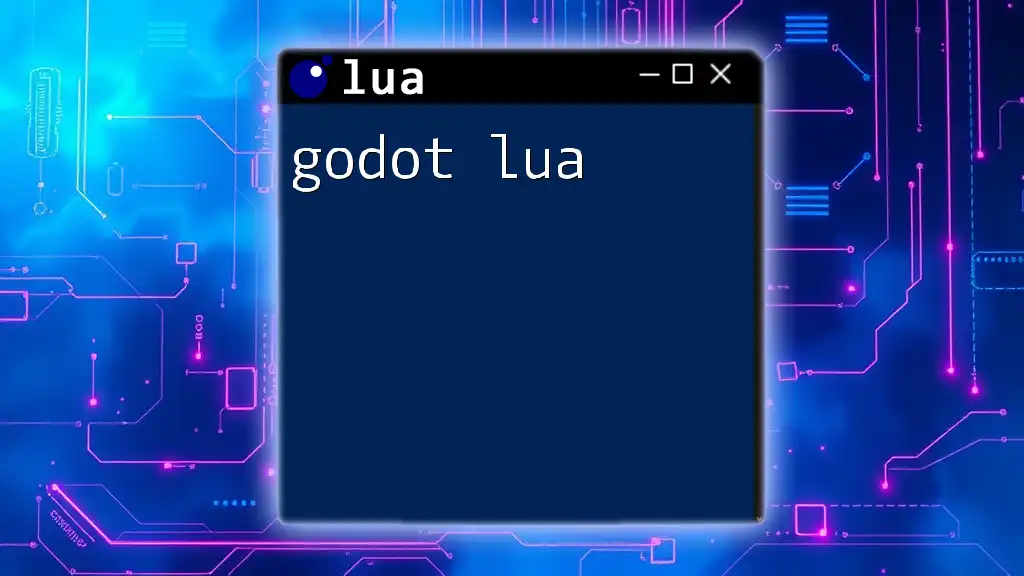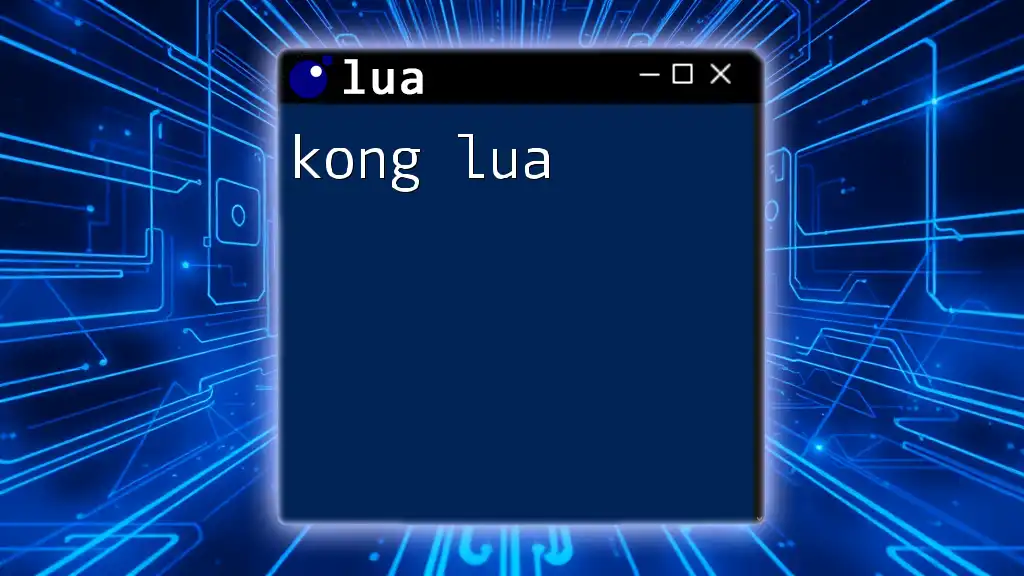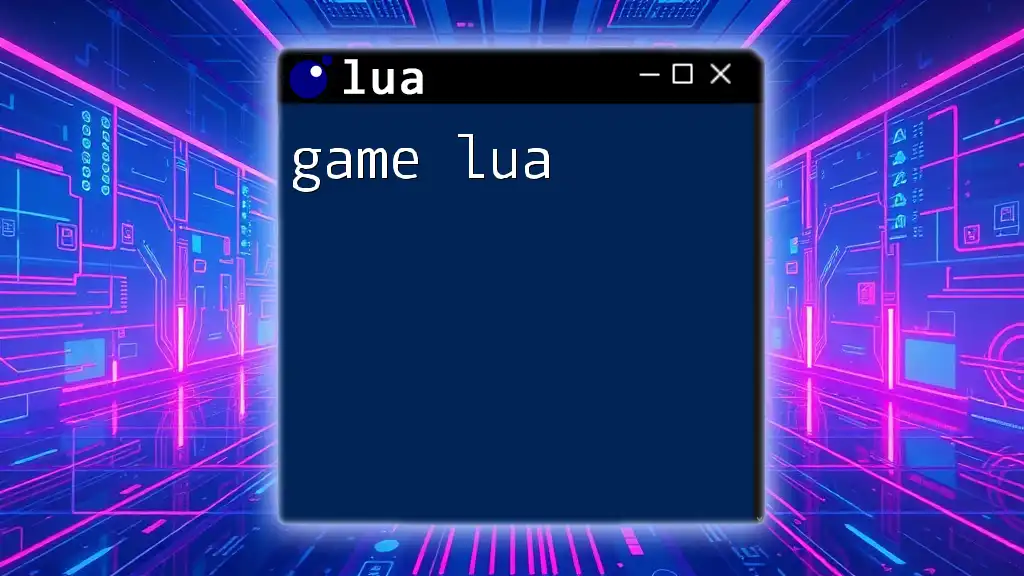"Code Lua" refers to the process of writing scripts in the Lua programming language to perform various tasks efficiently and effectively.
Here’s a simple example of a Lua script that prints "Hello, World!" to the console:
print("Hello, World!")
What is Lua?
Lua is a powerful, efficient, lightweight scripting language designed primarily for embedding in applications. Developed in the early 1990s, Lua has since gained popularity for its simplicity and flexibility, making it a favorite choice for game development, web applications, and various embedded systems. Its minimalistic design allows developers to use Lua for various applications without deep complexity.
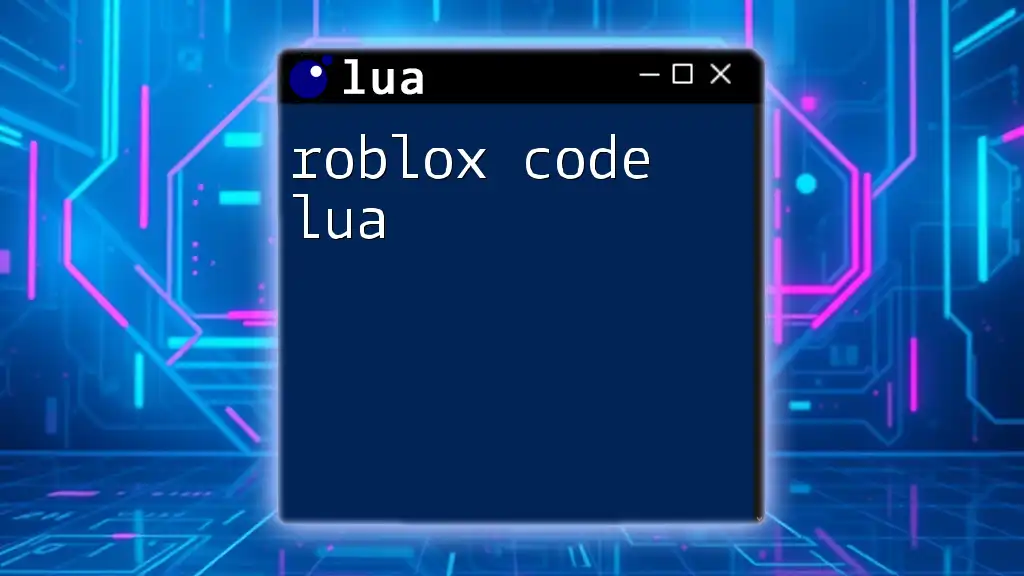
Why Code in Lua?
Coding in Lua offers several advantages. It is lightweight and has a minimal footprint, which makes it ideal for applications where memory resources are constrained. Additionally, Lua is easy to learn, thanks to its straightforward syntax, which resembles other popular programming languages. You'll find that it does not take long to master the basics, allowing beginners to jump in and start coding quickly.
Moreover, Lua's runtime efficiency is exceptional, which is a key reason it's widely used in the gaming industry and for rapid application development. The language's capability to handle tables, which serve as its primary data structure, provides powerful features for representing complex data elegantly.
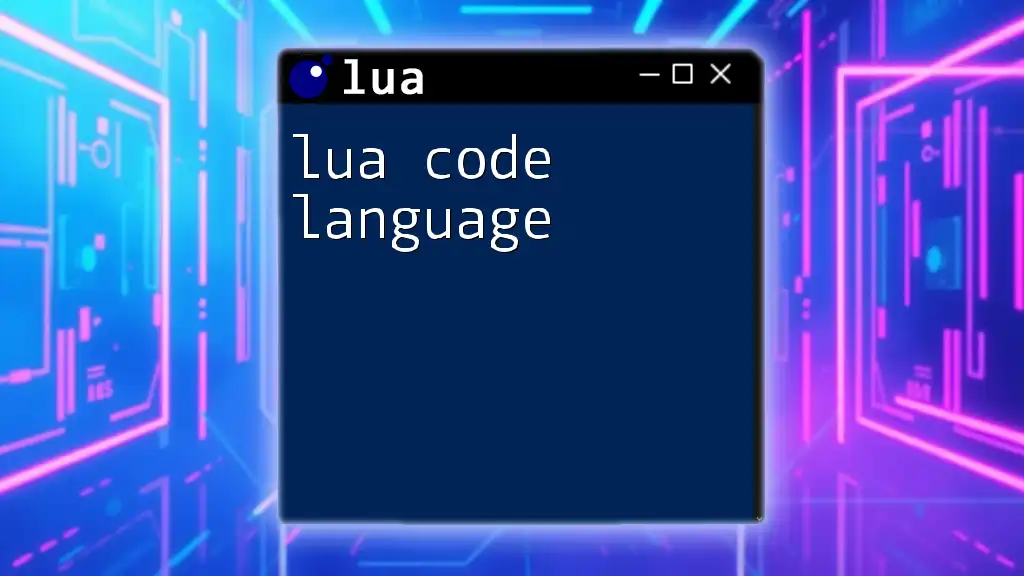
Setting Up Your Lua Environment
Installing Lua
To begin your journey with Lua, you will need to install the Lua interpreter on your machine. The installation process varies based on your operating system:
- Windows: Visit the Lua users' wiki, download the installer, and follow the prompts.
- macOS: Use Homebrew by running `brew install lua` in your terminal.
- Linux: Most distributions have Lua available in their package repositories. For example, you may use `sudo apt-get install lua5.3` for Ubuntu.
You can also choose popular IDEs like ZeroBrane Studio or Visual Studio Code with Lua extensions to enhance your coding experience.
Running Your First Lua Script
Once installed, let's create and run your very first Lua script. Open a text editor and type the following code:
print("Hello, World!")
Save this file as `hello.lua`. To execute the script, open your command line or terminal and navigate to the directory where the file is saved. Run the command:
lua hello.lua
You should see the output `Hello, World!`, confirming that everything is working correctly.
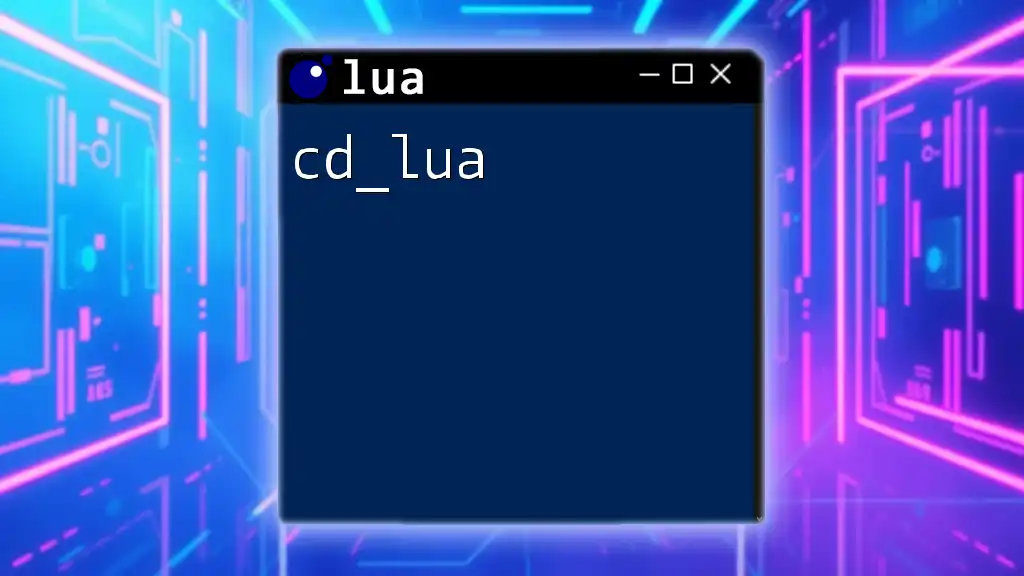
Core Concepts of Lua Programming
Basic Syntax and Structure
Lua syntax is designed to be simple and easy to read, which promotes a clean coding style. The primary data types include:
- Numbers: Represent numeric values (e.g., integers and floats).
- Strings: Used to store sequences of characters.
- Tables: The most versatile and powerful data structure in Lua, acting as arrays, dictionaries, or even objects.
Example of using different data types:
local num = 10 -- Number
local str = "Lua" -- String
local tbl = {1, 2, 3} -- Table
Variables and Data Types
In Lua, variables can be declared as either local or global. Local variables scoped within a function or block enhance memory management.
Here’s an example of variable declaration and type checking:
local myVariable = 42
print(type(myVariable)) -- Output: number
Control Structures
Control structures allow you to direct the flow of your Lua program based on conditions.
Conditional Statements
Using if, else, and elseif, you can execute blocks of code conditionally.
local age = 20
if age >= 18 then
print("Adult")
else
print("Minor")
end
Loops
Loops are essential for repeating operations. In Lua, you’ll commonly use for, while, and repeat-until loops.
Example of a for loop iterating over a table:
local fruits = {"apple", "banana", "cherry"}
for i, fruit in ipairs(fruits) do
print(fruit)
end
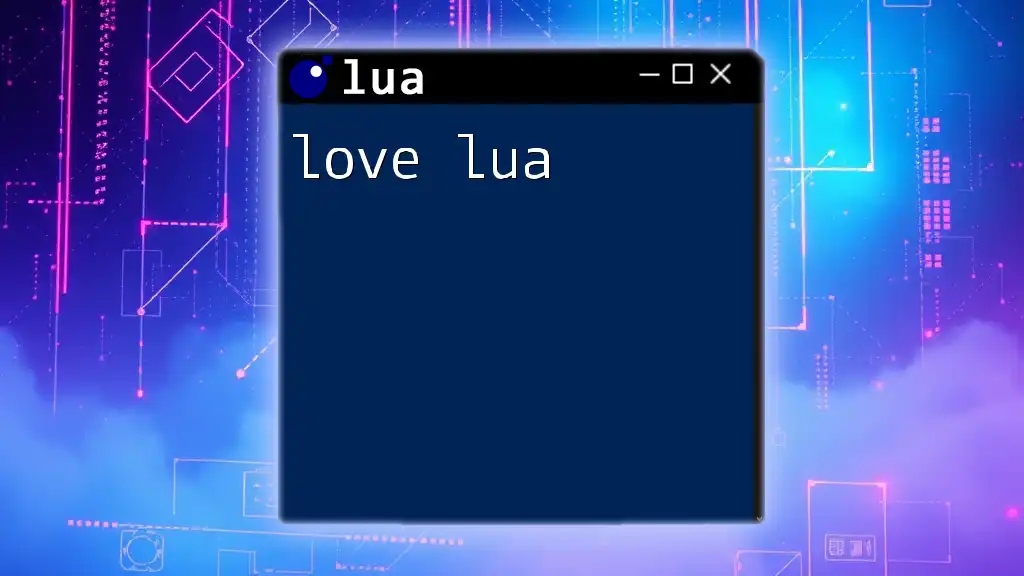
Utilizing Functions in Lua
Defining and Calling Functions
Functions in Lua are first-class citizens and can be defined using the `function` keyword. Here's how you can create a simple function that adds two numbers:
function add(x, y)
return x + y
end
print(add(5, 3)) -- Output: 8
Variable Scope and Higher-Order Functions
Understanding variable scope is crucial. Local variables only exist within the block they are defined in. Higher-order functions can take other functions as arguments or return them.
Example of a function that returns another function:
function addMaker(x)
return function(y)
return x + y
end
end
local add5 = addMaker(5)
print(add5(10)) -- Output: 15
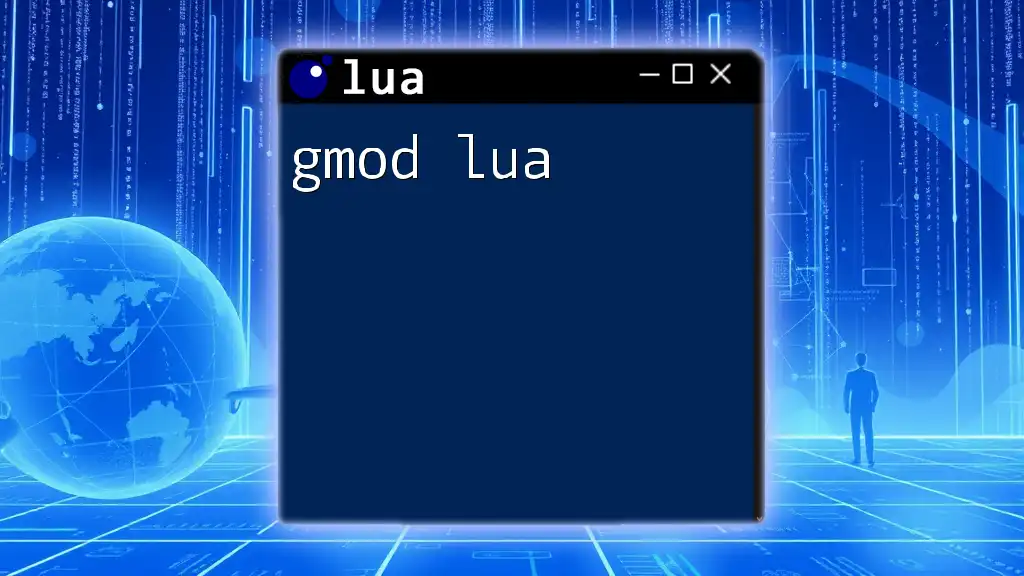
Working with Tables
Understanding Tables
Lua tables are unordered collections of key-value pairs, making them incredibly powerful. They can act as arrays, dictionaries, or even objects.
To create and manipulate a table, consider the following example:
local myTable = {name = "John", age = 30}
print(myTable["name"]) -- Output: John
myTable.age = 31 -- Updating a value
Common Table Operations
You can perform various operations on tables, such as insertion, deletion, and iteration. Here’s how:
table.insert(myTable, "New Value") -- Inserting a new value (not common as tables may have mixed types)
for key, value in pairs(myTable) do
print(key, value)
end
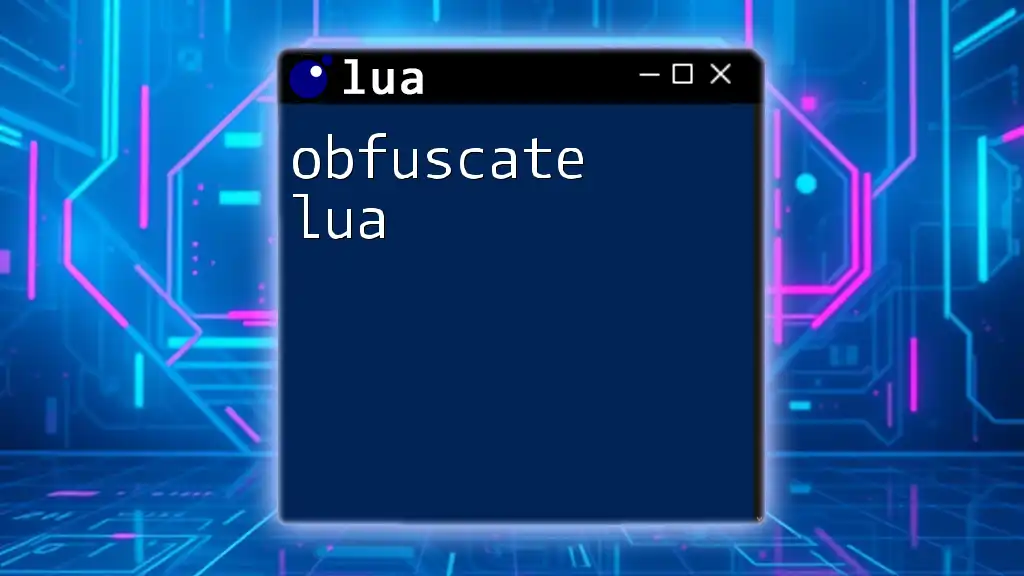
Error Handling in Lua
Understanding Errors and Debugging
Error handling in Lua is managed through functions like `pcall` (protected call). This function allows you to catch errors without stopping the execution of your program.
Example of error handling:
local status, err = pcall(function() error("An error occurred!") end)
print(status, err) -- Output: false An error occurred!
Best Practices for Debugging
For efficient debugging, leverage print statements and consider utilizing Lua debugger tools available in various IDEs.
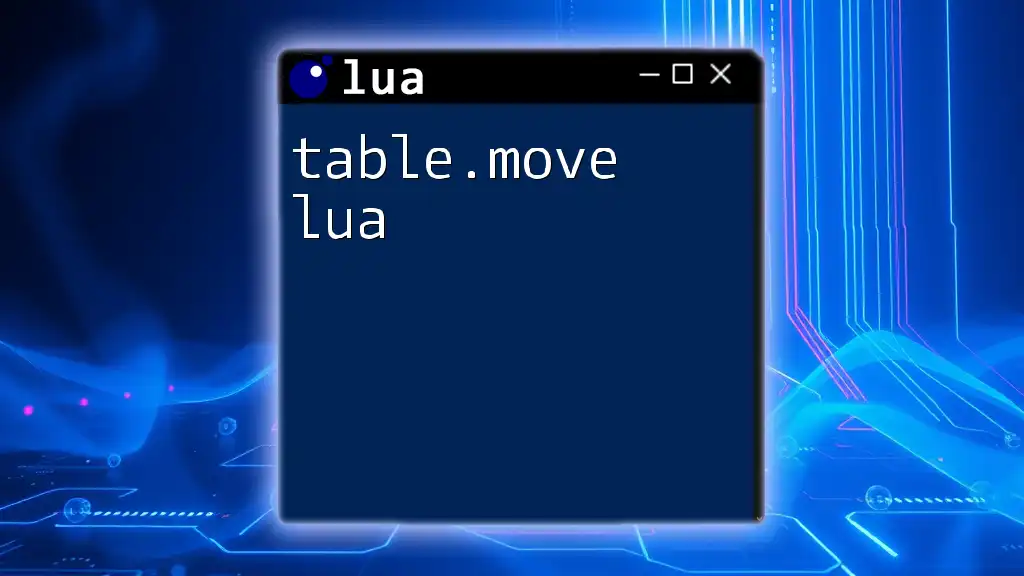
Integrating Lua with Other Languages
Embedding Lua in C/C++
Lua can be embedded in C/C++ applications, allowing developers to execute Lua code within a larger project. This integration offers great flexibility, especially for extending functionalities without modifying the underlying C/C++ codebase.
A practical example includes a C program that initializes the Lua interpreter and runs a Lua script.
Lua and Game Development
Lua is extensively used in game development due to its speed and efficiency. Popular game engines like LOVE2D and Unity support Lua scripting to handle game logic. Here’s a simple game loop example:
function love.update(dt)
-- Update the game state
end
function love.draw()
-- Draw on the screen
end

Conclusion
Recap of Key Learnings
Throughout this guide, we’ve explored the fundamental aspects of how to effectively code Lua. From syntax and variables to functions and tables, you should now feel more comfortable navigating the Lua programming landscape.
Further Learning Resources
To become proficient, consider diving into additional resources like recommended books, online courses, or Lua communities and forums where you can connect with fellow Lua enthusiasts.
Call to Action
As you embark on your Lua coding journey, I encourage you to share your experiences and code snippets with others in the community. Keep coding, experimenting, and learning!

